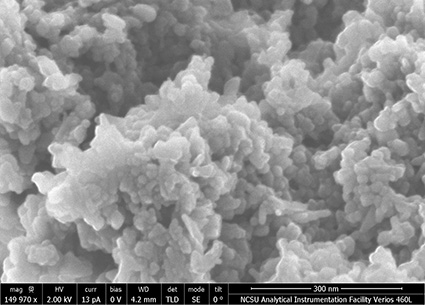
[Image above] Power grid. Credit: Ron Guest; Flickr CC BY-NC-ND 2.0
Back in December we covered research news from North Carolina State University, where scientists discovered a new phase of solid carbon that’s harder than diamonds and can be formed at room temperature and at ambient atmospheric pressure.
Called Q-carbon, this new phase is distinct from known phases of graphite and diamond.
“We’ve now created a third solid phase of carbon,” ACerS member Jay Narayan, who is also John C. Fan Distinguished Chair Professor of Materials Science and Engineering at NC State and lead author of the papers describing the work, said about the development in a December news release from NC State. “The only place it may be found in the natural world would be possibly in the core of some planets.”
Now Narayan and his colleagues are making news again.
In addition to discovering a new phase of boron nitride called Q-BN, they’ve also developed a new technique for creating cubic boron nitride (c-BN) at ambient temperature and pressure, a technique that could lead to advancements across many applications, including power grid technologies, according to a recent NC State news release.
“This is a sequel to our Q-carbon discovery and converting Q-carbon into diamond,” says Narayan in the release. “We have bypassed what were thought to be the limits of boron nitride’s thermodynamics with the help of kinetics and time control.”
The team’s results suggest that Q-BN is even harder than diamond and may be useful for cutting tools. C-BN is a form of boron nitride that has a cubic crystalline structure comparable to diamond, the release explains, but c-BN ticks some boxes diamonds just can’t.
More biomedical applications: “C-BN nanoneedles and microneedles can be made using our technique,” says Narayan.
Higher bandgap for higher power: It would be useful in high-power electronics and solid-state devices.
Effective transistors: It can be “doped” to give it positively and negatively charged layers.
Better protective coatings for high-speed machining tools: It forms an oxide layer on its surface when exposed to oxygen, making it stable at high temperatures and in oxygen-ambient environments.

c-BN nanocrystallites. Credit: Anagh Bhaumik via North Carolina State University
And the new technique for creating c-BN is faster and less expensive that previous methods—that equals better scale-up potential.
Creating c-BN used to require heating hexagonal boron nitride to 3,500 degrees Kelvin (5,840 degrees Fahrenheit) and applying 95,000 atmospheres of pressure, the release explains.
“Using this technique, we are able to create up to a 100- to 200-square-inch film of Q-BN or c-BN in one second,” Narayan says.
Armed with their latest innovation, Narayan and his team have their sights set on the future with the goal to transform the way high-powered devices are constructed for better efficiency.
“We’re optimistic that our discovery will be used to develop c-BN-based transistors and high-powered devices to replace bulky transformers and help create the next generation of the power grid,” Narayan says.
The paper, published in APL Materials, is “Research update: Direct conversion of h-BN into pure c-BN at ambient temperatures and pressures in air” (DOI: 10.1063/1.4941095).
